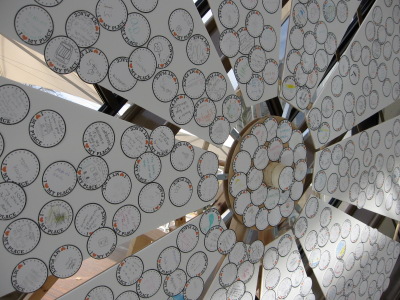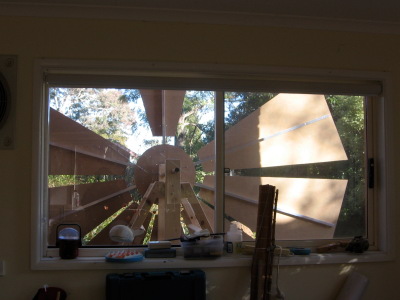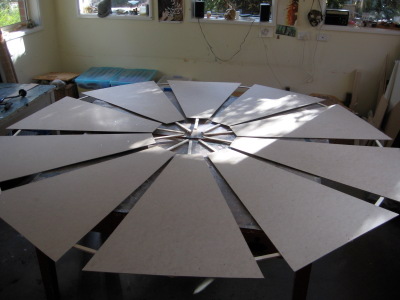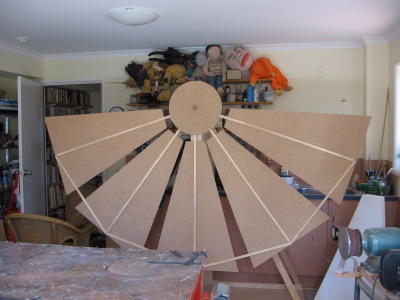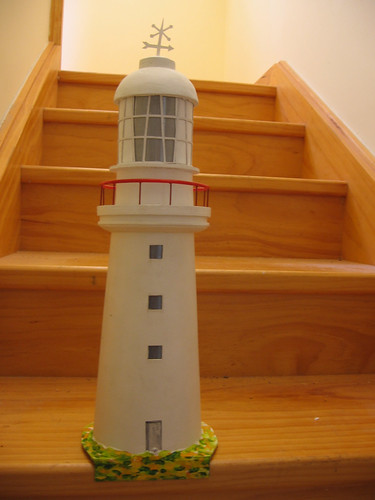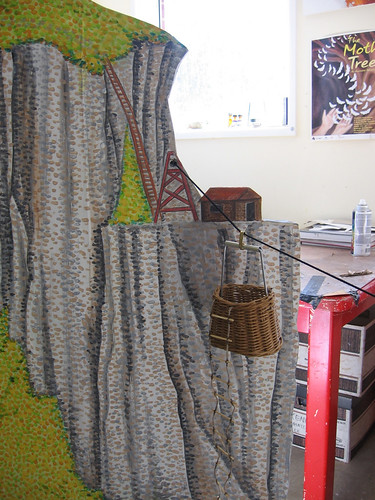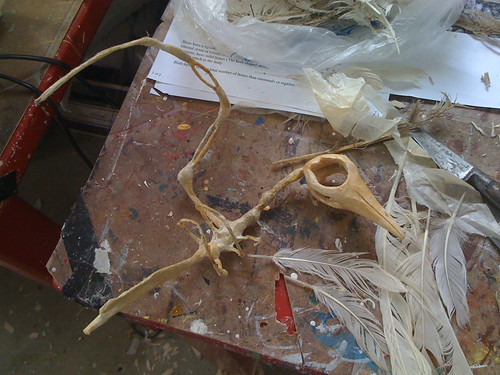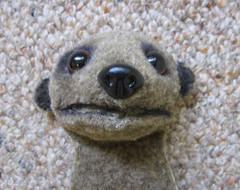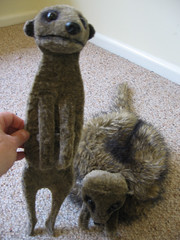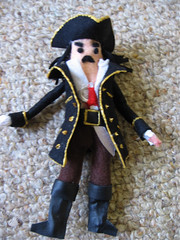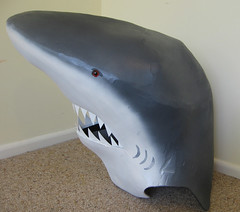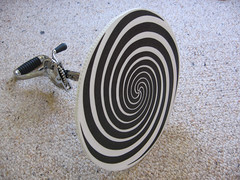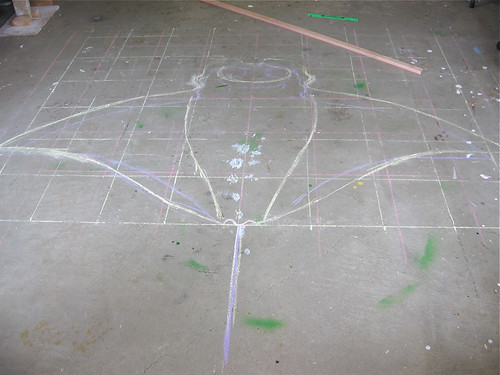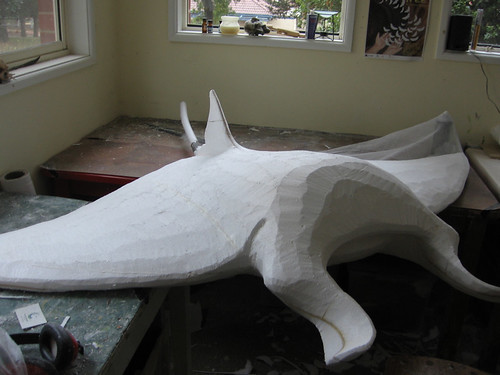The windmill prop I mentioned previously was made for the National Museum of Australia‘s July school holiday program Little BIG Things. It ran in conjunction with the museum’s new Landmarks exhibition, which explores a broad history of Australia through stories of places and their peoples.. The kids visiting the Discovery Centre drop-in activity area could make small sculptures of a big thing from where they came from, and then write a story about it to place on the blades of the windmill.
Against the huge windows in the foyer of the museum the windmill looks quite small despite being 3 metres tall. At home when I did a trial assembly of the windmill outside my studio window, it looked enormous! There are some more photos of the windmill in my Flickr photoset.
